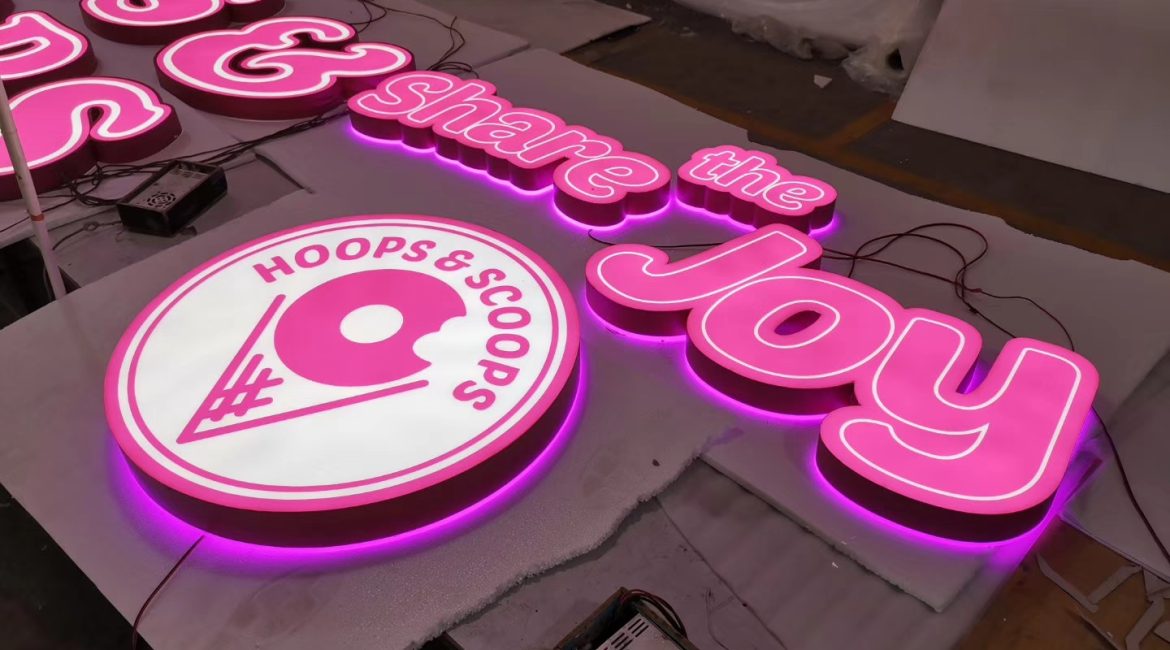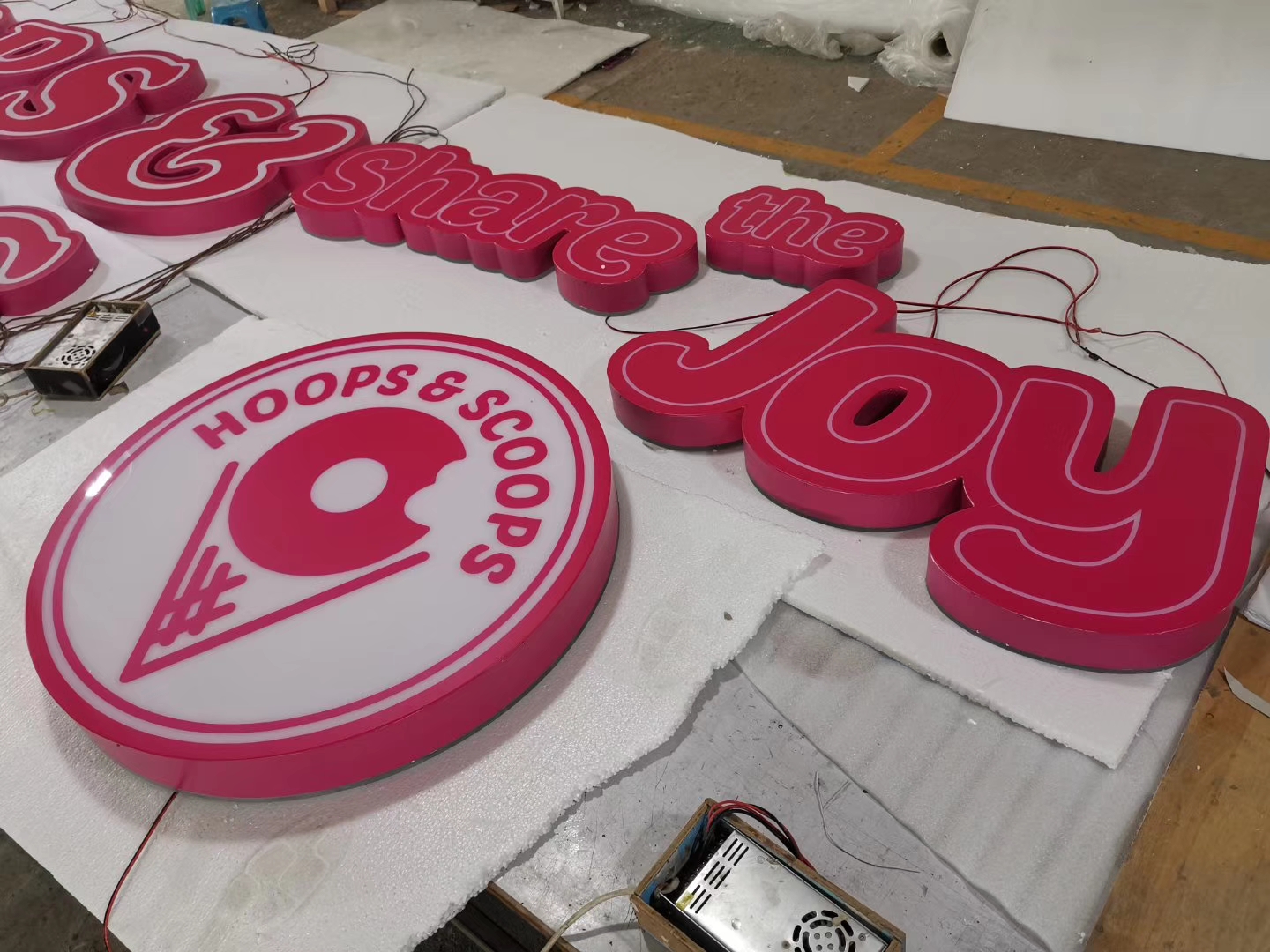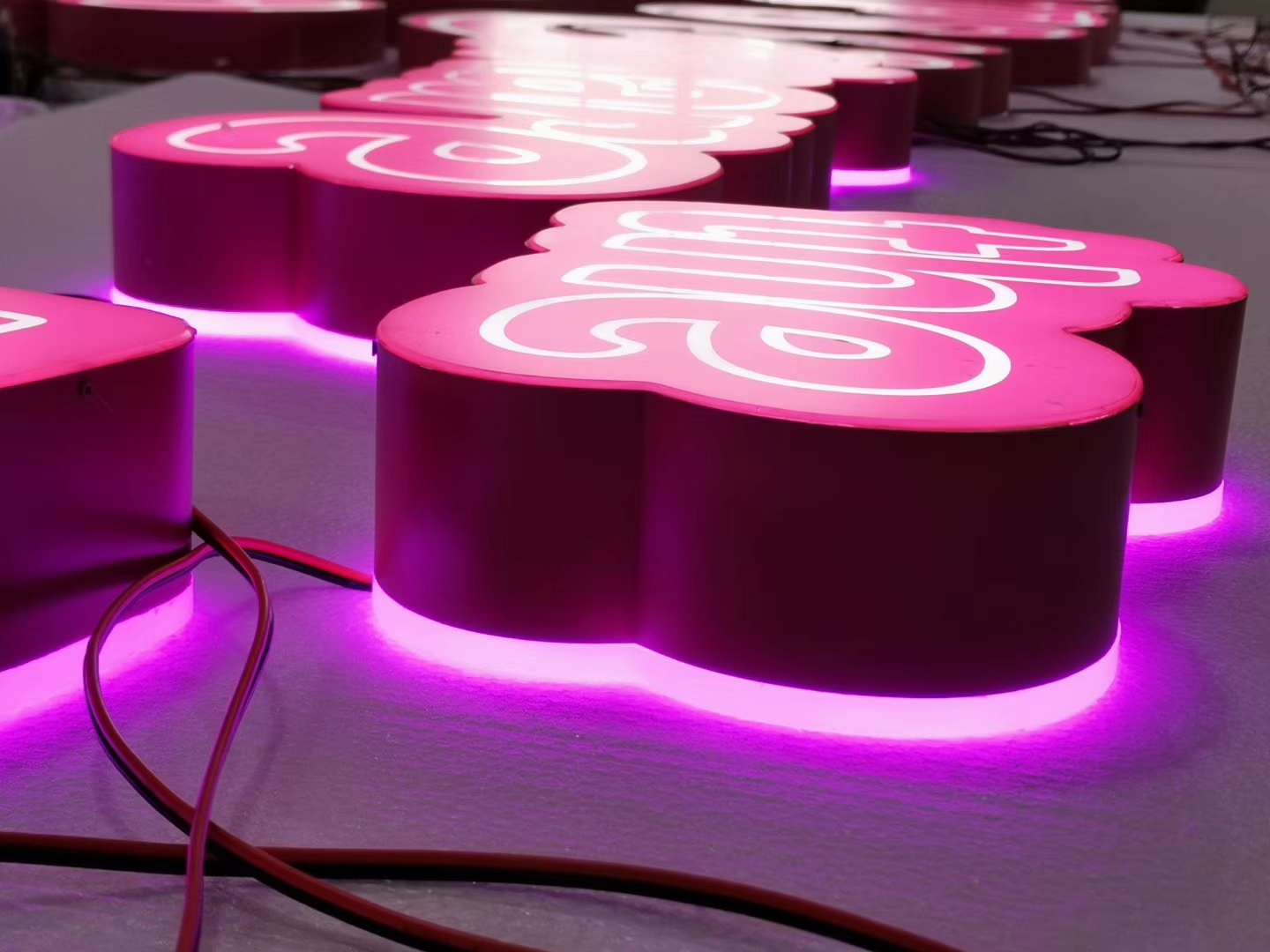Summary of the Sign
This describes a dual-illuminated, reverse-mounted (halo-lit) sign with a solid face. It’s a premium product often used for corporate branding, high-end retail, and wayfinding where a clean, modern aesthetic is desired.
Component Breakdown
1. Fabrication & Structure: 1.2mm SS or 2.0mm Aluminum
-
Function: This forms the main structure or “can” of the sign—the sides and back box that house the lighting components.
-
1.2mm Stainless Steel (SS): The premium choice.
-
Pros: Extremely strong, durable, and has a inherent high-end, modern look. Often used with a brushed or mirror polish finish for a luxury appearance. Highly resistant to corrosion.
-
Cons: More expensive and heavier than aluminum.
-
-
2.0mm Aluminum: The standard, high-quality choice.
-
Pros: Lightweight, corrosion-resistant, easier to fabricate and weld, and less expensive than stainless steel. It’s the most common material for this type of sign box. The 2.0mm thickness provides excellent rigidity.
-
2. Front Face & Graphics: 5-10mm Acrylic with UV Printing or Vinyl
-
Function: This is the “face” of the sign that the public sees directly. It transmits the light from the front illumination and displays the graphics (logo, text).
-
5-10mm Acrylic: A thick, solid plastic sheet.
-
Pros: Provides a very substantial, high-quality feel. The edges can be polished to a crystal-clear finish for a sleek look. It is durable and has excellent light-transmitting properties.
-
UV Printing: A direct printing method where ink is cured onto the surface of the acrylic with ultraviolet light.
-
Pros: Extremely high resolution, vibrant colors, and great durability. The print is behind the acrylic surface, so it’s protected from scratching and UV fading. Allows for full-color photographs and complex gradients.
-
-
Vinyl: A cut vinyl film applied to the surface.
-
Pros: Cost-effective for simple, solid colors and shapes. Can be used for specific effects like reflective or metallic finishes.
-
Cons: Generally less premium than UV printing. The edges of the vinyl can be visible, and it’s more susceptible to scratching and peeling over time compared to encapsulated UV print.
-
-
3. Halo Effect & Rear Illumination: Back with 10-15mm Acrylic
-
Function: This is the key to the “halo” or “backlit” effect. The back panel is also acrylic, but it is typically frosted/opaque white or a solid color.
-
10-15mm Acrylic: An even thicker acrylic sheet.
-
Why so thick? The thickness helps create a deep, robust “glow” and ensures the light from the LEDs mounted inside the box is diffused evenly across the entire surface, eliminating hot spots. It also adds to the overall structural integrity and premium weight of the sign.
-
-
How the Halo Effect Works:
-
LEDs (almost always low-profile LED modules) are mounted inside the box, pointing backwards towards this rear acrylic panel.
-
The light hits the frosted acrylic, which acts as a diffuser, creating a large, even glowing surface.
-
This glow is then projected outwards onto the wall behind the sign.
-
Because the sign is mounted a few inches away from the wall (using stand-off brackets), the light creates a “halo” or aura around the sign, making it appear to float.
-
4. Illumination (Implied)
-
Front Illumination: LEDs are mounted inside the box pointing forwards to illuminate the front graphic panel (the 5-10mm acrylic).
-
Rear (Halo) Illumination: LEDs are mounted inside pointing backwards to illuminate the thick rear acrylic panel.
-
These two light systems are almost always on separate circuits, allowing for different lighting modes: front only, halo only, or both simultaneously.
Visual Effect & Applications
-
Daytime: The sign looks like a high-quality, solid object with crisp graphics. The polished metal returns and thick acrylic edges contribute to its premium appearance.
-
Nighttime:
-
With front light on, the graphics are brightly lit and easy to read from a distance.
-
With halo light on, the sign creates a dramatic ambient glow on the wall, highlighting its shape and adding depth and sophistication.
-
With both lights on, it becomes a striking visual beacon, maximizing visibility and aesthetic impact.
-
This type of sign is commonly used for:
-
Corporate building logos
-
Luxury retail storefronts
-
Restaurants and hotels
-
Interior wayfinding in offices and hospitals
-
Architectural accents
Summary of the Build Process:
-
The metal (SS or Aluminum) is fabricated into a shallow box with an open front and back.
-
LED modules for front and halo light are installed inside the box on separate channels.
-
The thick (10-15mm) frosted acrylic is cut to size and installed as the back panel, sealing the box.
-
The thinner (5-10mm) clear acrylic face is printed via UV or covered with vinyl.
-
The printed face is installed on the front of the box, completing the assembly.
-
The sign is mounted to a wall using stand-off brackets to allow the halo light to escape.






